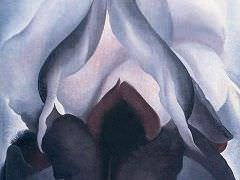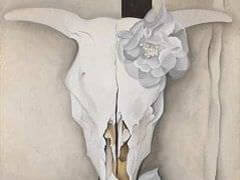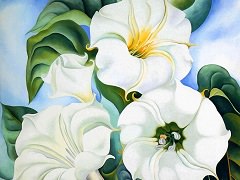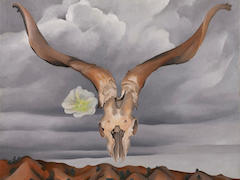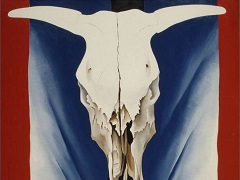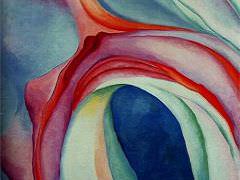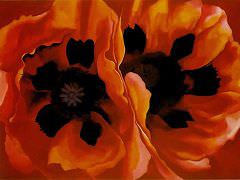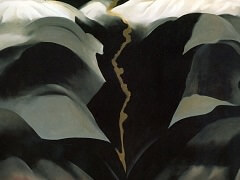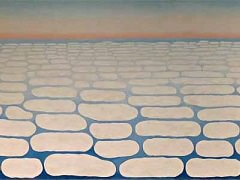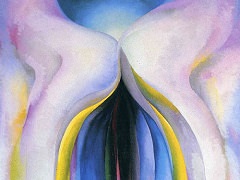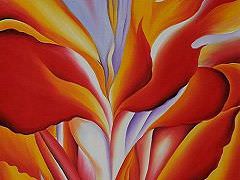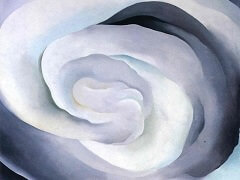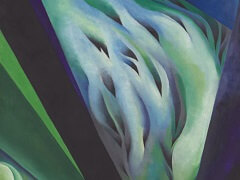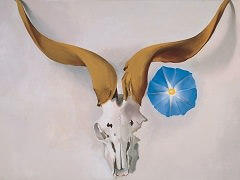From the Faraway Nearby, 1937 by Georgia O'Keeffe
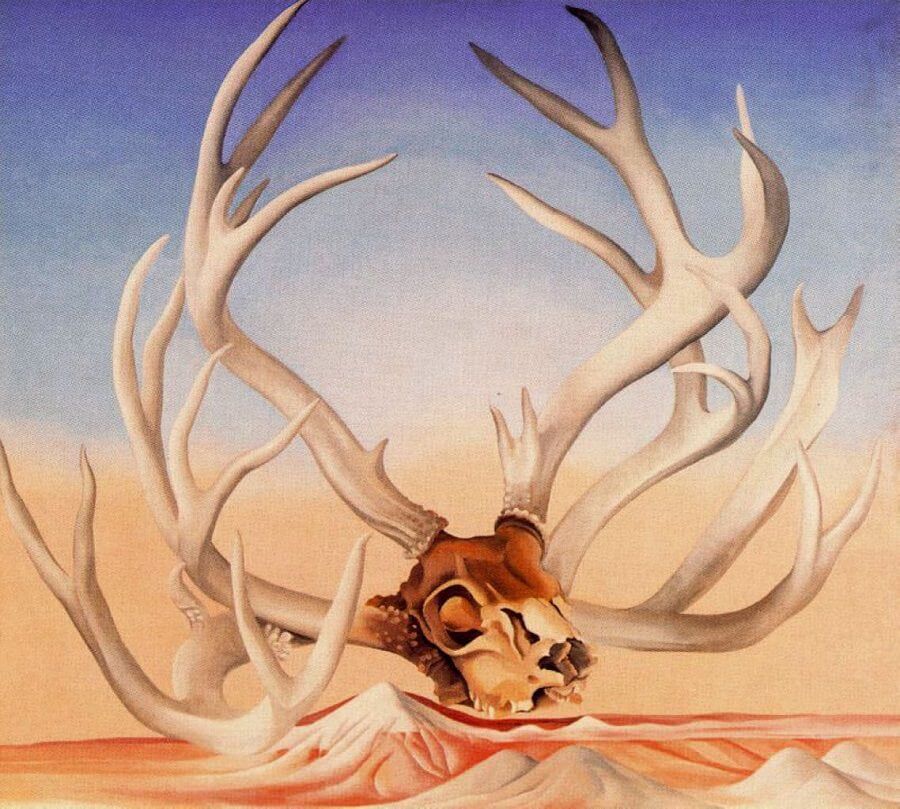
The highly charged contrast of closely viewed foreground details and hugely distant horizons, which typified the New Mexican Views of O'Keeffe, was not a mere optical illusion. The large scale, bright light, and clear air of the region permitted one to see for the proverbial "forever,", and the juxtaposition of faraway and nearby was an integral aspect of desert vision.
Since 1935, O'Keeffe had been experimenting with compositions that combined skeletal and landscape imagery, without regard to their relative size, scale, or perspective. Rendering each element in equally sharp focus, she blurred the spatial distinctions between what is perceived of as being near and what is far. Here, an enormous animal skull rests tentatively on the narrow strip of land at the bottom, emphasizing the strong similarities between the color and shape of the enormous antlers and the hilltop peaks. Despite her hyperrealistic painting style, there is no verisimilitude to the scene. Even the animal skull with its extravagant number of antlers is an imaginative invention. Merging these images into a single composition, however, may have been O'Keeffe's way of summarizing her feelings about the Southwest. Originally titled Deer's Horns, Near Cameron, after her 1937 camping trip to Arizona with photographer Ansel Adams, she later gave it this more poetic title that suggests both a physical and emotional reality. As O'Keeffe wrote (1976), the Far Away was "a beautiful, untouched lonely-feeling place."
Georgia O'Keeffe struggled with the near and the far. It was in these vast spaces that the painter most prominently identified with New Mexico found the inspiration for her most memorable images. From the Faraway Nearby combines the absolute beauty of the distance with the tangle and bones strewing, as deer horns reach down to embrace and uplift the distant curve of hill. Forsaking any middle ground, the close and the infinite are locked together - the detailed skull and distant vista, united only in the kiss of horn and hill.

